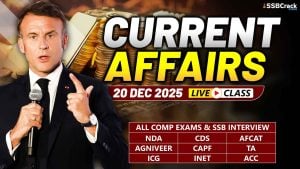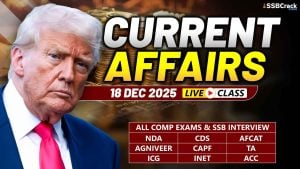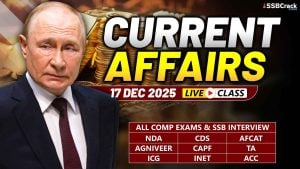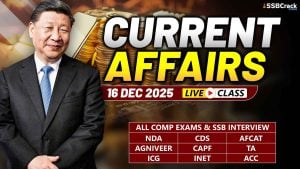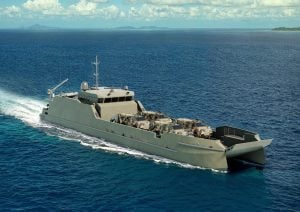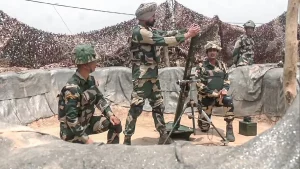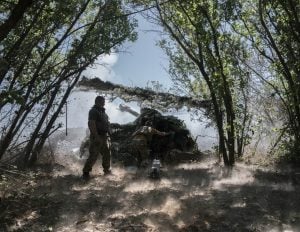India launched Operation Sadbhav to provide humanitarian assistance to Southeast Asian countries affected by Typhoon Yagi, including Vietnam, Laos and Myanmar. India sent US$ 1 million worth humanitarian relief assistance to Vietnam, to provide relief to the affected communities in northern Vietnam impacted by the natural disaster.
Operation Sadbhaav |Typhoon Yagi
Why In News
- India launched Operation Sadbhav to provide humanitarian assistance to Southeast Asian countries affected by Typhoon Yagi, including Vietnam, Laos and Myanmar.
Operation Sadbhav
- India sent US$ 1 million worth humanitarian relief assistance to Vietnam, to provide relief to the affected communities in northern Vietnam impacted by the natural disaster.
- A consignment of 35 tons of humanitarian assistance, including water purification items, water containers, blankets, kitchen utensils, and solar lanterns, among others, was airlifted to Vietnam today by a special aircraft, a statement said.
- Prime Minister Narendra Modi had conveyed sympathies and solidarity to the Prime Minister of Vietnam, Pham Minh Chinh immediately after the typhoon struck Vietnam. External Affairs Minister S. Jaishankar had also extended sympathies to the Deputy Prime Minister and Foreign Minister of Vietnam, Bui Thanh Son.
- India also sent US$ 100,000 worth emergency flood relief assistance to Lao People’s Democratic Republic (Lao PDR)
- The floods and landslides have caused widespread damage to property and agricultural land affecting around 40,000 people in northern Laos.
- Ten tonnes of humanitarian relief supply has been sent to the Government of Lao PDR. The supply in the form of hygiene kits, blankets, mosquito nets and repellents, sleeping bags, gensets, water purifiers, water purification tablets and disinfectants and other material was airlifted today on-board a special aircraft from India.
- Besides, 10 tons of aid including dry ration, clothing and medicines left for Myanmar onboard Indian Naval vessel INS Satpura.
How Are Tropical Cyclones Formed
- Tropical Cyclone is a weather phenomenon.
- A tropical cyclone is formed only over warm ocean waters near the equator.
- Warm, moist air rises up and away from the ocean surface, creating an area of low pressure.
- It causes the air from surrounding areas with higher pressure to move towards the low-pressure area.
- This leads to warming up of air and causes it to rise above.
- As the air rises & cools, the water in the air forms clouds.
- This complete system of clouds and wind spins & grows, along with the ocean’s heat.
- As the wind rotation speed increases, an eye gets formed in the middle.
Typhoon Yagi
- Millions of people in Southeast Asia continue to struggle with torrential rains, floods, and landslides triggered by Typhoon Yagi — the strongest tropical cyclone Asia has seen this year and the second most powerful storm in the world so far this year after Hurricane Beryl.
- Typhoon Yagi has severely impacted multiple countries, including the Philippines, China, Laos, Myanmar, and Thailand, it has hit Vietnam the hardest.
- More than 100 people have died in flooding and mudslides caused by the remnants of Typhoon Yagi in Myanmar.
- In Myanmar, state media reports that nearly 66,000 houses had been destroyed as of Friday evening, along with 375 schools and a monastery. Several miles of road and other infrastructure have been washed away.
- Adverse weather from Typhoon Yagi, the strongest storm to hit Asia this year, has killed hundreds of people in Vietnam and Thailand, and flood waters from swollen rivers have inundated cities in both countries.
- Typhoon Yagi started as a tropical storm in the western Philippine Sea on September 1. It made landfall in the Philippines the next day and started to weaken.
- However, due to unusually warm waters in the South China Sea, the storm intensified again. By September 4, it strengthened into a strong typhoon with Category 3 winds.
- The next day, it became a Category 5 typhoon with peak maximum sustained winds of 260 kmph — Typhoon Yagi is one of four Category 5 storms recorded in the South China Sea, after Pamela in 1954, Rammasun in 2014, and Rai in 2021.
- On September 6, it made a landfall in China’s Hainan province with winds of 223 kmph. The following day, Typhoon Yagi hit near Haiphong, Quang Ninh province, in northern Vietnam, as one of the strongest storms the country has seen in more than a decade.
- The storm was subsequently downgraded to a tropical depression but still brought heavy rains last week in countries such as Myanmar, where it triggered severe floods around the remote capital, Naypyidaw.

















